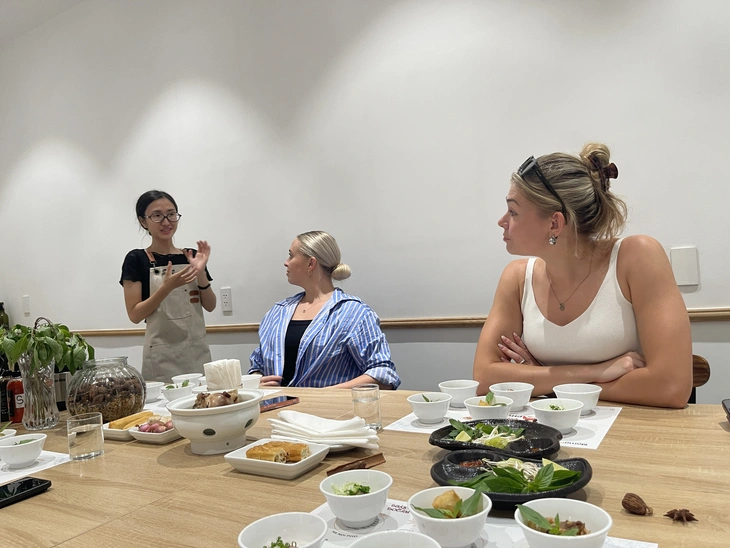
Hannah Prescott (right) and Emily Riby listen to Minh Anh explain about the dish - Photo: NGOC DONG
In a small room on the first floor of a house on Ngo Duc Ke Street, Ms. Minh Anh, an employee of Saigon Social, introduced each of the pho ingredients displayed on the table. In front of her were foreign guests listening attentively, occasionally reaching out to touch cinnamon, star anise, cardamom, coriander seeds, etc. with curious eyes.
When it came to the most important part, Minh Anh enthusiastically told about the process of simmering bones and skimming off foam, which took hours to create a clear and fragrant broth, the soul of Vietnamese pho.
“You know, actually, ‘pho’ is the name of this type of noodle,” Minh Anh said as he went on to introduce how to make pho noodles, from the steps of making the noodles, cutting the noodles, to the tips for identifying freshness by chewing or pulling lightly with your hands.
As British people living in Singapore and having visited Vietnam many times, Emily and Hannah are no strangers to pho. Emily also loves to review food, so she has eaten at many pho restaurants in both Singapore and Vietnam. She was the one who brought her friend Hannah to this pho experience.
However, this was the first time the two had learned in depth about the ingredients and how to cook pho. “Only now do I know that ‘pho’ refers to pho noodles, before I thought pho was the name of the broth,” Hannah shared with a laugh.
This experience is the brainchild of Jovel Chan, a Singaporean food blogger living in Ho Chi Minh City. Jovel founded the Saigon Social food exchange space, where she and her partners design workshops/tastings for foreign visitors to Vietnam to experience Vietnamese cuisine on the following themes: coffee, pho, fish sauce, etc.
“I had the idea for a pho experience like this for a long time, but it took time to convince our partners to provide the meals, agree with our food storytelling…”, Jovel shared.
“Although we have not been around for long, our business has attracted a lot of foreign customers. Most of the customers who come here do not know that there are many things related to pho,” she added.
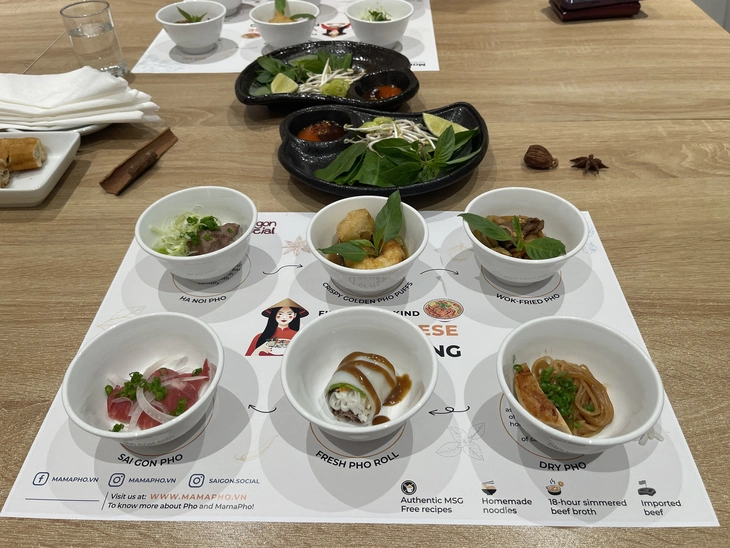
6 types of MamaPho pho were introduced along with cooking methods, ingredients, and ways to eat..., at a "pho tasting" session at Saigon Social - Photo: NGOC DONG
Just one pho dish but why is it so diverse?
The main part of the experience is enjoying 6 different types of pho: Hanoi pho, Saigon pho, pho bong, stir-fried pho, pho cuon and Gia Lai dry pho. The dishes are served in small portions, not to fill you up but so that you can fully explore the richness of Vietnamese pho.
Minh Anh introduces the preparation, origin, history, ingredients and typical way of eating each type. In particular, the two most familiar versions: Northern pho and Southern pho also have differences that make diners "wow" with interest.
If Northern pho is light, usually served with only green onions and a little chili sauce, Southern pho is rich with thinly sliced onions, basil, coriander, bean sprouts, plus black bean sauce and satay.
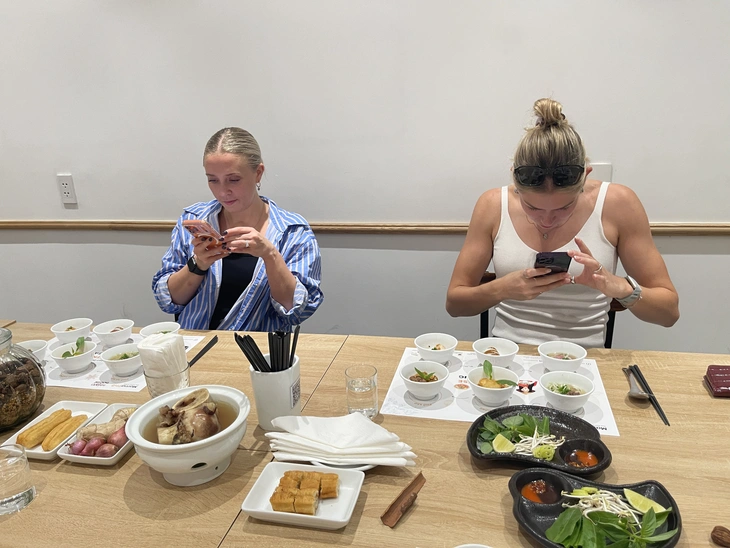
Hannah Prescott (right) and Emily Riby enjoy taking photos of pho versions at the experience - Photo: NGOC DONG
Emily and Hannah were delighted to learn that pho puff was made from square rice noodles, stacked and fried to create a crispy texture; and the refreshing pho rolls dipped in rich peanut sauce also made them nod their heads.
Next is stir-fried pho: pho noodles are stir-fried with meat, vegetables and spices, keeping the right amount of toughness, the aroma spreading impressively.
Finally, dry pho or “two bowl” pho Gia Lai brings a completely different experience with its own noodles and broth, ending the surprisingly diverse pho journey with Emily and Hannah.
“I didn’t think there was such a variety in pho,” Hannah said. “I also learned that each pho restaurant has its own recipe, which makes the dish taste different from place to place,” Emily continued.
Vietnam Pho Festival 2025: When Vietnamese pho flavor becomes a 'cultural ambassador' in Singapore
Working in nutrition, Hannah also loves pho for its healthy properties. “The broth is clear, fat-free, the beef provides protein, the noodles add starch, and with the addition of fresh vegetables, it’s a well-balanced dish,” she says.
At the end of the session, participants were also “tested” with fun questions to ensure they had mastered their knowledge of pho. Before leaving, Emily also asked about good pho restaurants to “take advantage” of before flying back to Singapore, and at the same time save for future visits to Vietnam.
Just 1 hour certainly cannot help tourists understand every corner of pho, but they leave with a lot of new knowledge, knowing that the next time they come to the restaurant, they can recognize which is southern pho and which is northern pho, and at the same time appreciate more the effort to make a delicious bowl of pho as well as the cultural value that this dish brings to the spiritual life of Vietnamese people.
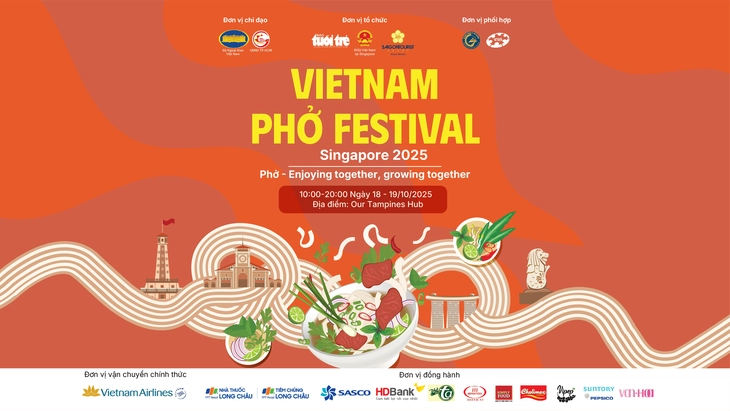
Source: https://tuoitre.vn/khach-tay-hoc-an-pho-20251014170308507.htm


![[Photo] Conference of the Government Party Committee Standing Committee and the National Assembly Party Committee Standing Committee on the 10th Session, 15th National Assembly](https://vphoto.vietnam.vn/thumb/1200x675/vietnam/resource/IMAGE/2025/10/15/1760543205375_dsc-7128-jpg.webp)

![[Photo] The 18th Hanoi Party Congress held a preparatory session.](https://vphoto.vietnam.vn/thumb/1200x675/vietnam/resource/IMAGE/2025/10/15/1760521600666_ndo_br_img-0801-jpg.webp)


![[Photo] Many dykes in Bac Ninh were eroded after the circulation of storm No. 11](https://vphoto.vietnam.vn/thumb/1200x675/vietnam/resource/IMAGE/2025/10/15/1760537802647_1-7384-jpg.webp)
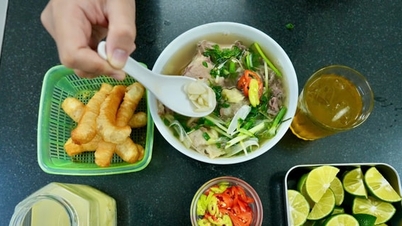

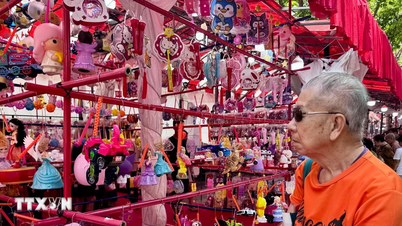













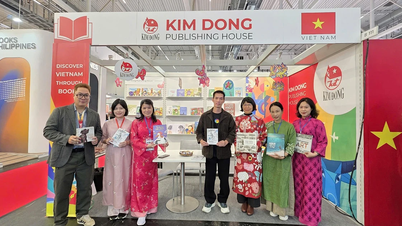
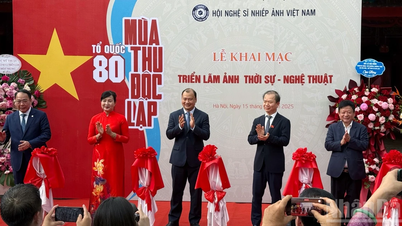








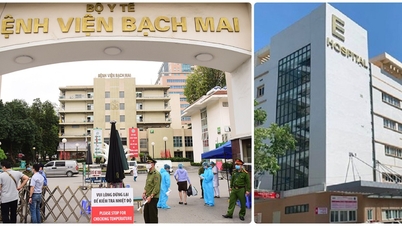




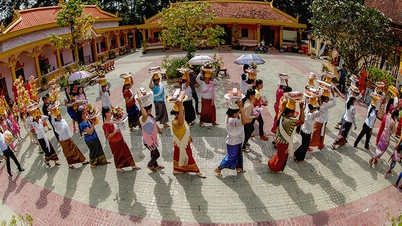

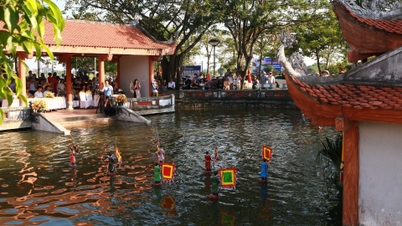
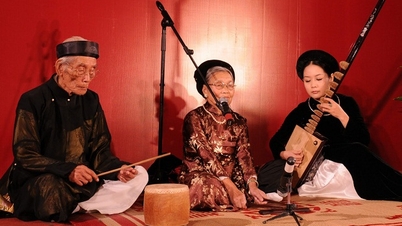



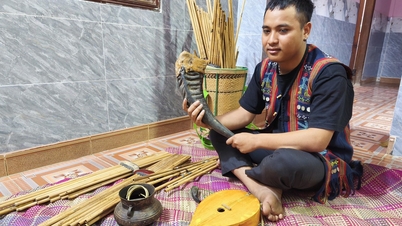










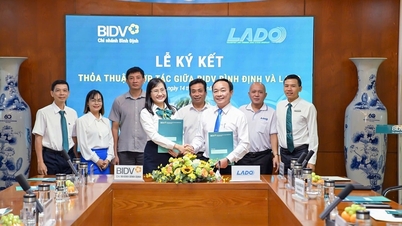




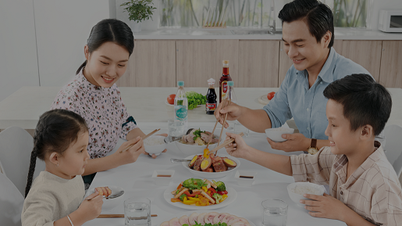














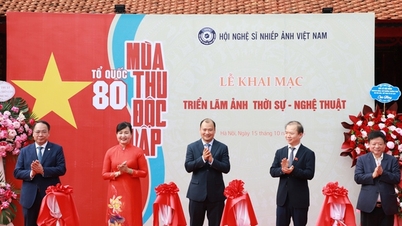







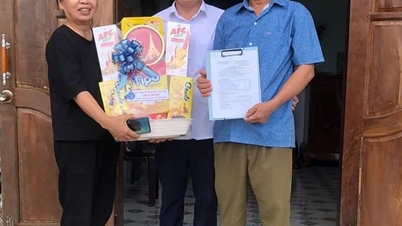


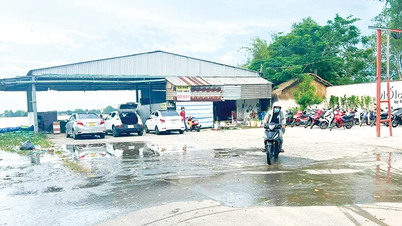










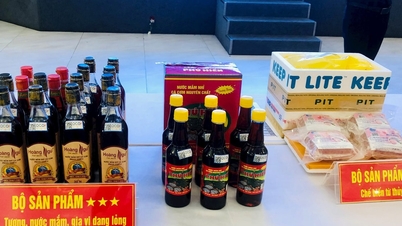









Comment (0)